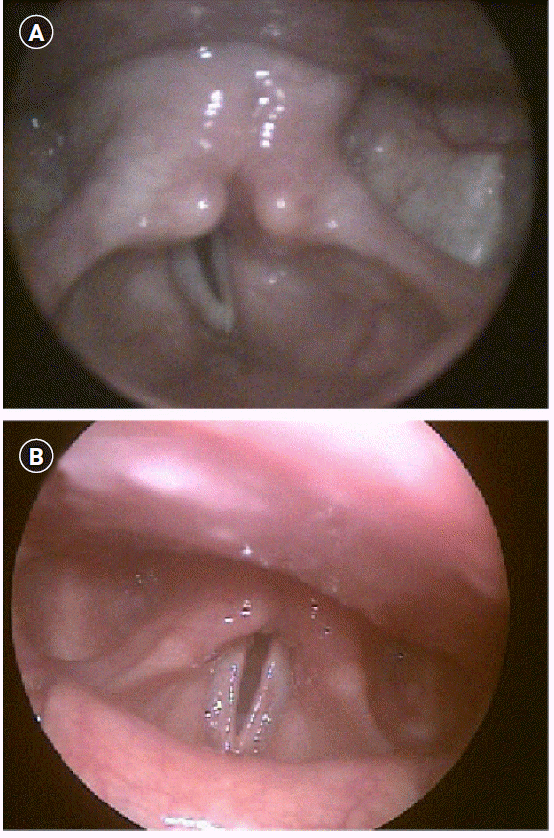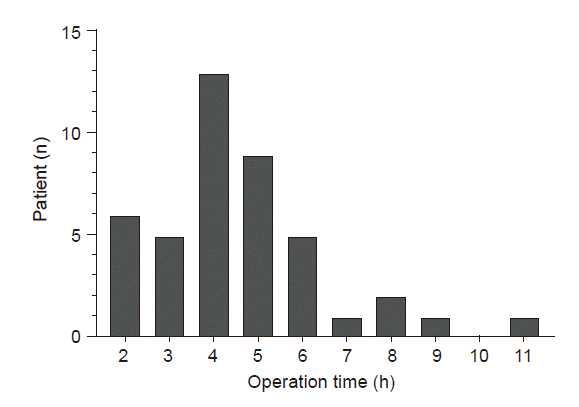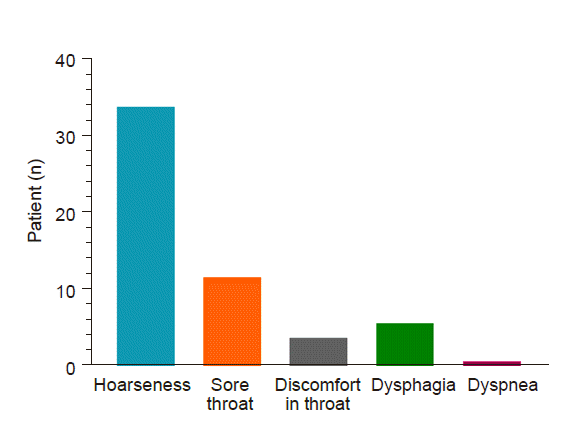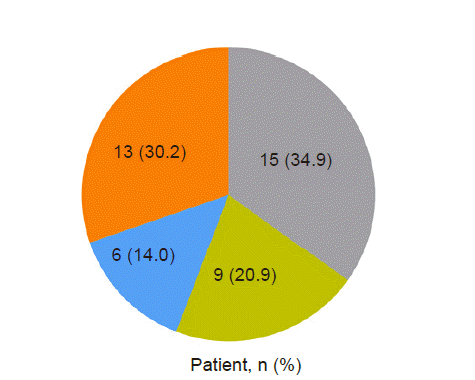1. David DS, Shah M. Vocal cord paralysis following intubation. JAMA. 1971; 216:1645–6.
2. Domino KB, Posner KL, Caplan RA, Cheney FW. Airway injury during anesthesia: a closed claims analysis. Anesthesiology. 1999; 91:1703–11.
3. Holley HS, Gildea JE. Vocal cord paralysis after tracheal intubation. JAMA. 1971; 215:281–4.
4. Flint P, Haughey B, Lund V, Niparko J, Robbins K, Thomas JR, et al. Cummings otolaryngology: head and neck surgery. 6th ed. Philadelphia: Elsevier;2015.
5. Takano S, Nito T, Tamaruya N, Kimura M, Tayama N. Single institutional analysis of trends over 45 years in etiology of vocal fold paralysis. Auris Nasus Larynx. 2012; 39:597–600.
6. Hamdan AL, Moukarbel RV, Farhat F, Obeid M. Vocal cord paralysis after open-heart surgery. Eur J Cardiothorac Surg. 2002; 21:671–4.
7. Hulscher JB, van Sandick JW, Devriese PP, van Lanschot JJ, Obertop H. Vocal cord paralysis after subtotal oesophagectomy. Br J Surg. 1999; 86:1583–7.
8. Kikura M, Suzuki K, Itagaki T, Takada T, Sato S. Age and comorbidity as risk factors for vocal cord paralysis associated with tracheal intubation. Br J Anaesth. 2007; 98:524–30.
9. Feierabend RH, Shahram MN. Hoarseness in adults. Am Fam Physician. 2009; 80:363–70.
10. Mau T. Diagnostic evaluation and management of hoarseness. Med Clin North Am. 2010; 94:945–60.
11. Tasar A, Yanturali S, Topacoglu H, Ersoy G, Unverir P, Sarikaya S. Clinical efficacy of dexamethasone for acute exudative pharyngitis. J Emerg Med. 2008; 35:363–7.
12. Quick CA, Merwin GE. Arytenoid dislocation. Arch Otolaryngol. 1978; 104:267–70.
13. Rosenthal LH, Benninger MS, Deeb RH. Vocal fold immobility: a longitudinal analysis of etiology over 20 years. Laryngoscope. 2007; 117:1864–70.
14. Rudert H. [Uncommon injuries of the larynx following intubation. Recurrent paralysis, torsion and luxation of the cricoarytenoid joints]. HNO. 1984; 32:393–8. German.
15. Younes N, Robinson B, Delbridge L. The aetiology, investigation and management of surgical disorders of the thyroid gland. Aust N Z J Surg. 1996; 66:481–90.
16. Colton House J, Noordzij JP, Murgia B, Langmore S. Laryngeal injury from prolonged intubation: a prospective analysis of contributing factors. Laryngoscope. 2011; 121:596–600.
17. Santos PM, Afrassiabi A, Weymuller EA Jr. Risk factors associated with prolonged intubation and laryngeal injury. Otolaryngol Head Neck Surg. 1994; 111:453–9.
18. Weymuller EA Jr. Laryngeal injury from prolonged endotracheal intubation. Laryngoscope. 1988; 98(8 Pt 2 Suppl 45):1–15.
19. Gupta J, Varshney S, Bist SS, Bhagat S. Clinico-etiolological study of vocal cord paralysis. Indian J Otolaryngol Head Neck Surg. 2013; 65:16–9.
20. Havas T, Lowinger D, Priestley J. Unilateral vocal fold paralysis: causes, options and outcomes. Aust N Z J Surg. 1999; 69:509–13.
21. Sulica L. The natural history of idiopathic unilateral vocal fold paralysis: evidence and problems. Laryngoscope. 2008; 118:1303–7.
22. Woodson GE, Miller RH. The timing of surgical intervention in vocal cord paralysis. Otolaryngol Head Neck Surg. 1981; 89:264–7.
23. Hoffman HT, McCulloch TM. Anatomic considerations in the surgical treatment of unilateral laryngeal paralysis. Head Neck. 1996; 18:174–87.
24. Yin SS, Qiu WW, Stucker FJ. Major patterns of laryngeal electromyography and their clinical application. Laryngoscope. 1997; 107:126–36.
25. Jung A, Schramm J, Lehnerdt K, Herberhold C. Recurrent laryngeal nerve palsy during anterior cervical spine surgery: a prospective study. J Neurosurg Spine. 2005; 2:123–7.
26. Hahn FW Jr, Martin JT, Lillie JC. Vocal-cord paralysis with endotracheal intubation. Arch Otolaryngol. 1970; 92:226–9.








 PDF
PDF Citation
Citation Print
Print



 XML Download
XML Download